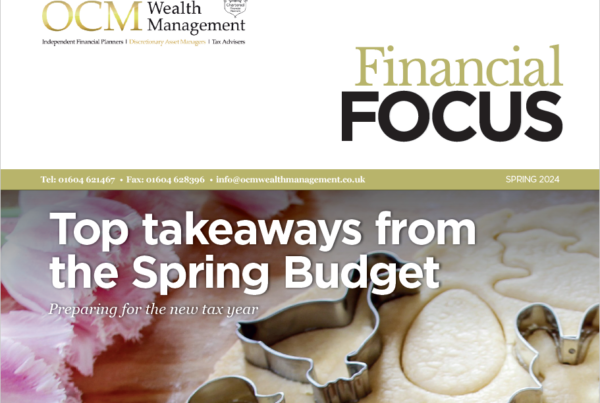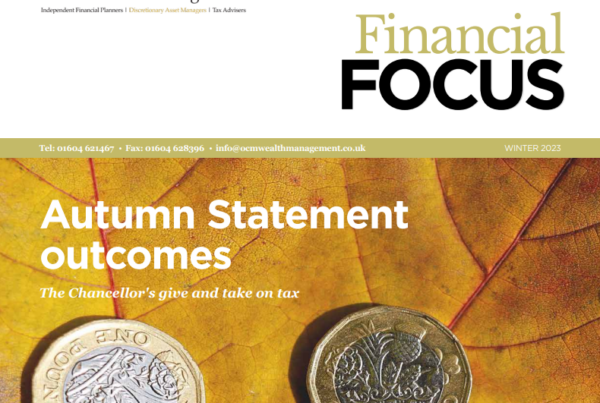Coronavirus Outbreak– Markets Panic, Why Aren’t We?
We have experienced extremely turbulent conditions in stock markets this week, owing to new cases of the coronavirus cropping up outside of China, sparking panic in financial markets. At OCM, while we agree that the coronavirus is a human tragedy as many have already lost their lives as will likely many more, when you remove the emotion and look only at the data, there are currently 82,589 confirmed cases and 2,814 deaths from the coronavirus COVID-19 outbreak as of Thursday. This is a big number, and is still growing, however the pace of growth looks to be slowing, and we believe that the number of cases in China should be far more than that detailed, so in reality, the death rate should be much lower.
That being said, it is also important to note that a shortage of specialized test kits has caused health officials in many countries to rely on observable symptoms for diagnoses, and because coronavirus mimics the flu and pneumonia in its early stages, it’s also possible that authorities around the world may be over-counting as well. As a result, instead of looking at it from a total confirmed case perspective, we think that the number of total active cases provides a better look into what is happening. This measure takes total confirmed cases and subtracts deaths and recoveries. This gives the total amount of people who have the potential to spread the virus further.
According to Worldometer, which aggregates statistics from health agencies across the world, total active cases peaked about a week ago at 58,747, and have since been declining. Even with all the new cases we are seeing in South Korea, Italy and Iran (where data is suspect). As of Thursday, the total active cases now stand at 46,430, a drop of 21% from the peak on February 17th. To date, there have been 36,159 cases with an outcome (2,814 deaths and 33,345 recovered). One death is too many, but to put that number into a little bit of perspective, according to the WHO, in the United States alone for the 2019-2020 season, there have been at least 15 million flu illnesses, 140,000 hospitalizations and 8,200 deaths. Imagine if everyone with an internet connection followed the spread of this annual flu, case by case, hour by hour. It’s true that the death rate from Coronavirus appears to be around 2% in China, which is much higher than the death rate from the normal flu, but like the flu, the rate increases with age, and China has an aging population. Outside of China, the death rate is far less, roughly 1%. Of course, efforts to combat the virus have been stepped up in recent weeks, and there is already a drug moving toward first phase clinical trials. It took three months for this to happen in 2020, versus 20 months for SARS back in 2002/03 – a testament to advances in drug technology.
From a macro-economic point of view, the real question is “how will this impact the US economy over the coming year” because if the US gets a cold we are all affected. In reality, this is why we have not reacted. In short, our view is that the US remains relatively well insulated from the crisis, with a solid health system. The US started the year with solid economic data and so far, nothing has changed. In fact, with all the data we already have on hand, we are expecting around 2% growth in Q1, supported by a mild winter. Most of the impact to the US from the coronavirus is likely to come in Q2. Economically, capital goods exports to China along with imports from China are going to be depressed given the struggles to reopen factories abroad. Most Chinese factories are still only operating at about 50-60% of capacity, with shipping giant Maersk announcing that it has already cancelled more than 50 trips to and from Asia. With China being home to seven of the world’s busiest container ports, there is bound to be some impact globally. Inventories in the US will be depleted more rapidly, but once the virus subsides, we expect to see faster accumulation of inventories in the second half of the year.
Revenues and earnings from companies that are highly exposed to China will definitely be affected. China being shut down for a month will have a global impact. But lower earnings in the first half of the year should be made up by a strong rebound in the second half of the year with payback from lost months. Demand remains strong, and there has been no visible impact yet on the job market as shown by initial unemployment claims. The key issue to watch is supply disruption. We suggest looking through any earnings weakness as we expect it to be transitory. One small nugget of good news is that many companies had already been shifting supply chains from China due to the Trump Tariffs. If they weren’t considering it before, they will be now as they realize the importance of diversification. We expect this trend to accelerate moving forward.
As it stands, the US consumer remains on solid footing, and will continue to be one of the key drivers to US economic growth in the year to come. It is our view that as with all of the other viruses we have seen over the past decades that have dissipated, the Coronavirus will be no different. Some have suggested that the 1918 Spanish Flu, which killed hundreds of thousands in the US could happen again. No one knows, but 2020 is not 1918. Technology and news move much faster and the US rebounded from the Spanish Flu when all was a said and done. We suspect that any drop in earnings or economic activity will be short lived, and more than made up for in the year to come. Don’t panic, stay invested.
On a final note, when we look back in history, over a 38-day trading period during the height of the SARS virus back in 2003, the S&P 500 index fell by 12.8%. During the Zika virus, which occurred at the end of 2015 and into 2016 the market fell by 12.9%. There are other examples, but they all passed, and the market recovered and hit new highs. With additional support being provided by China, the US and Europe (presumably), and with local governments loosening their purse strings, we have no reason to think that this downturn in sentiment is anything more than that, and will reverse itself once the focus returns to the data as noted above.
Key Events We Are Watching This Week:
As always, we are watching markets and new economic data releases closely. For more information on key data releases this week, please see the attached Market Update document.
- Friday: UK Consumer Confidence
- Tuesday: Chinese Manufacturing data for February
For anyone who wants further data to substantiate the position please review the attached Global Economic Update document and the Economic Dataset.
Model Portfolios & Indices
It has been an awful week for the stock markets with the markets generally down between 7.5% and 10% and the resultant impact on our portfolios is that we have lost all the YTD returns. Due to portfolio diversification, we have not moved negatively anywhere near the amount of the indices (noting that the index movements are a day lagged therefore don’t reflect the full drop while our portfolios do). We do expect the markets to calm down, and with the selloff we see many using this as a buying opportunity to buy back into equities. This drop in portfolios and indices is hugely disappointing but as this rout started on Friday and seems to have stabilized yesterday before returning today, it is impossible to trade and we leave the day to day up to fund managers with whom we invest your assets.
Let’s hope that the optimists return, and the health authorities continue working to effectively contain the virus, allowing common sense to return to markets. For now, we watch and remain invested.
Please note that the YTD data in the table below reflects performance from the start of the new year.
Important Information
The data above will not directly correlate to the indices as there is always a delay in pricing because the US markets close significantly later than the European markets and the Asian markets. The data set above reflects the last close and much of the day’s movements will not yet be reflected in the portfolios due to pricing delays. You cannot therefore directly correlate indices to the portfolios. The value of investments may fluctuate in price or value and you may get back less than the amount originally invested.
Past performance is not a guarantee of future performance. Performance figures quoted include the fund manager charges but exclude other fees such as adviser, custodian, switch and/or discretionary investment management fees. Unless otherwise instructed and accrued, income is reinvested into the portfolio.
This Day in History
On this day in 1797 the Bank of England issued the first £1 note. The note is now no longer legal tender and was replaced by the £1 coin on the 21st April 1983.
Have a great week,
Jason & Gina



